Lightweighting applications through smart engineering design
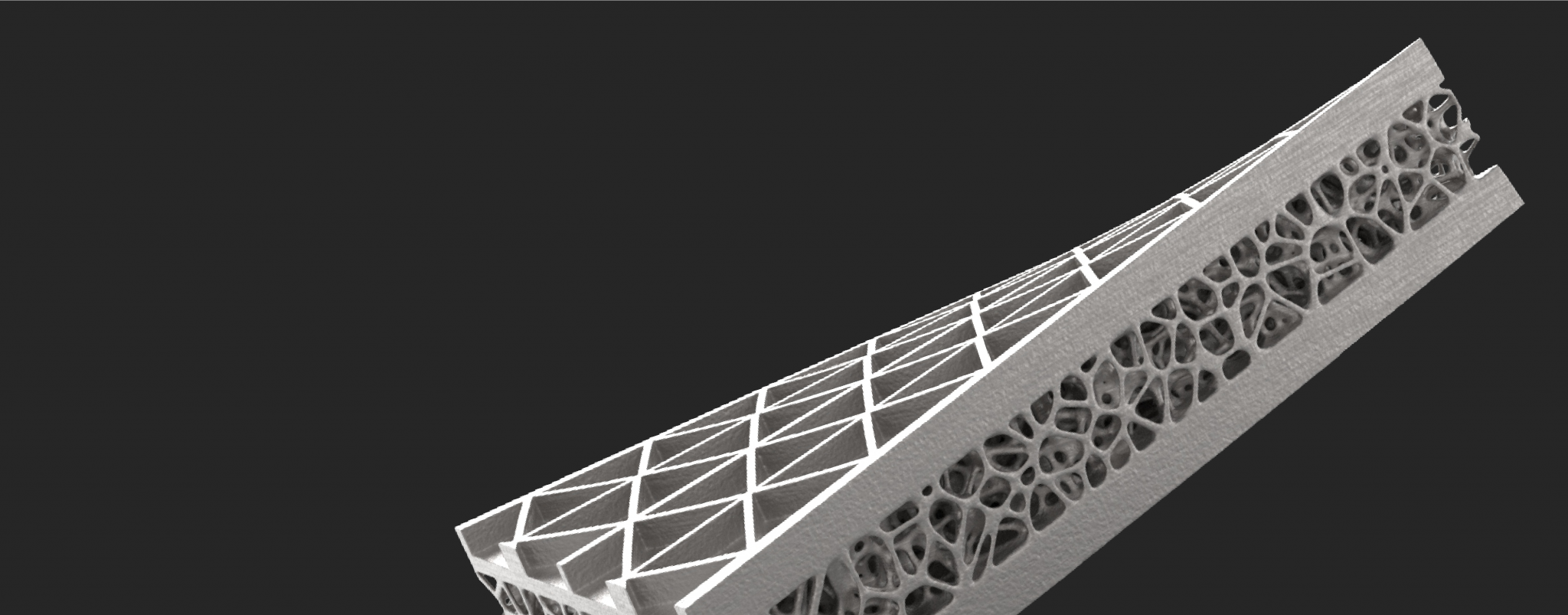
Written by nTop
Published on February 24, 2022
Lightweighting technology leads to improved performance, increased energy efficiency, reduced manufacturing costs, and greener products. This article shares lightweighting application examples from the automotive, aerospace, heavy machinery, medical, and sporting goods industries for your inspiration.
Applications
Key Software Capabilities
- Topology optimization
- Lattice structures
Lightweighting means "doing more, with less" and offers benefits beyond just material reduction. Engineers can apply lightweighting techniques across different industries to give a wide range of products a differentiating advantage.
Some of the benefits of lightweighting include improved performance, reduced energy consumption, lower manufacturing costs, or enhanced ergonomics. Lightweighting also plays a crucial role in creating “greener products” that minimize carbon footprint.
In this article, we explore how engineers are using lightweighting design techniques today to change the way they develop products.
Lightweighting applications in automotive
As governments worldwide set increasingly ambitious sustainability goals, the automotive industry faces new emissions regulations. Lightweighting will play a crucial role in successfully complying with these regulations.
Why is lightweighting important in automotive?
The importance of lightweighting in the automotive industry is indisputable, but the reason for this importance varies between applications.
Electric vehicles (EVs)
The weight of an EV directly impacts its range and battery life. Although most agree that EVs will play an indispensable role in tackling climate change, with 2 out of 3 Americans acknowledging that EVs are good for the environment, uptake has been slow — 35% of car buyers express that range concerns are responsible for their reluctance to purchase an EV.
Further range improvements, which rely heavily on lightweighting, will accelerate the uptake of EVs in the coming years — bringing significant benefits to both the consumer and the environment.
Race and luxury cars
Race and luxury vehicles rely on effective lightweighting to deliver the increased performance promised to buyers. Lighter cars are more maneuverable and boast improved acceleration and deceleration traction. In the case of racing vehicles, this ensures optimal speed and handling on the race track.
Motorcycles
While passenger cars serve a solely practical purpose for many, motorcycles represent the less obvious choice of transportation and, as such, attract a greater number of enthusiasts — for whom unique aesthetics and the “rule of cool” are of paramount importance.
Lightweighting offers motorcycle designers the opportunity to take a more adventurous and unique approach to aesthetics, which can play an essential role in the success of their product.
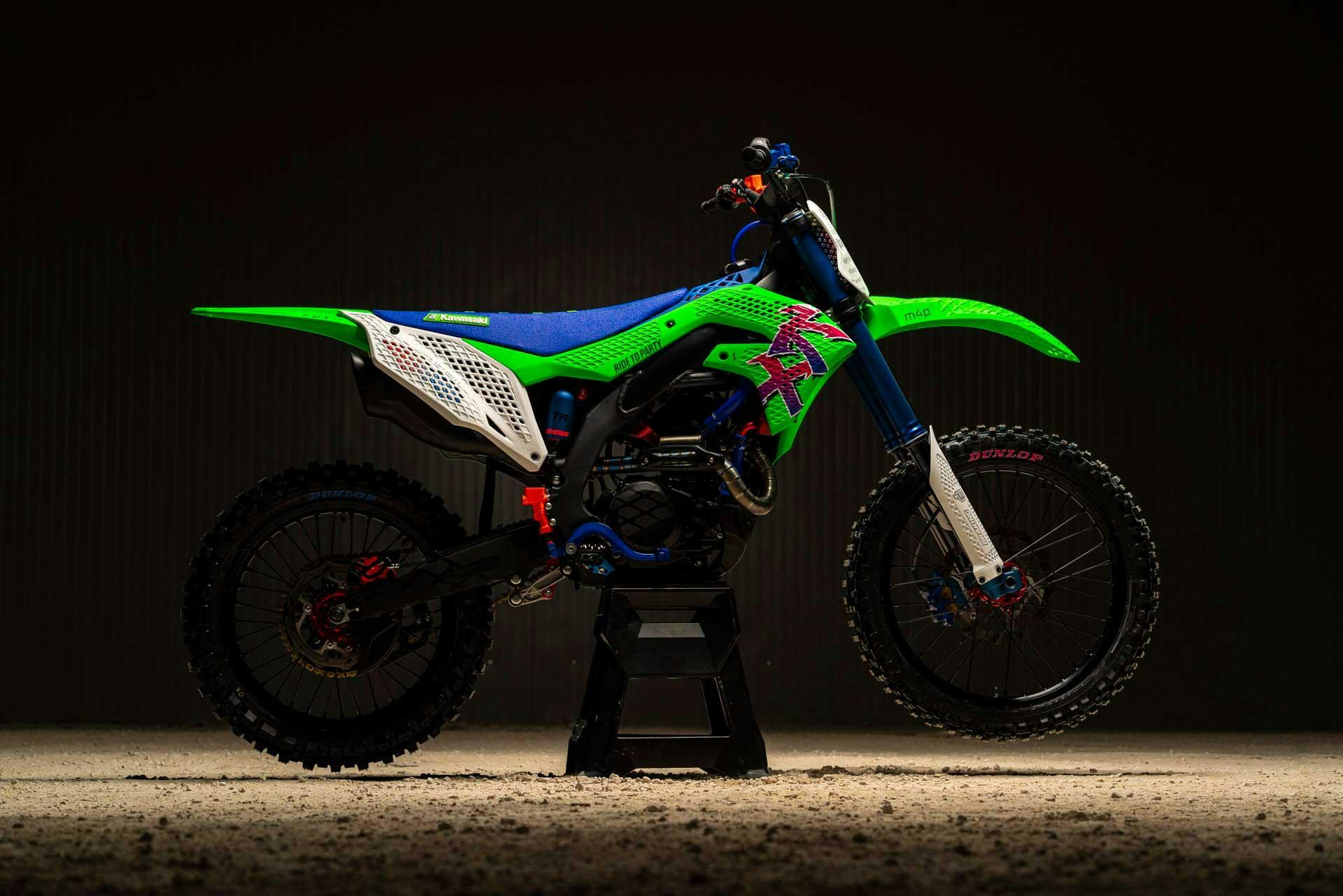
KAWASAKI KX 450 prototype, lightweighted to achieve extreme weight reduction and increased stiffness. Source.
Other vehicles
The benefits of leveraging lightweight materials to achieve weight reduction also apply to other road vehicles, such as passenger cars, public transportation vehicles like buses and trains, and commercial vehicles like trucks. Reducing vehicle weight improves fuel economy and lowers vehicle emissions, contributing to the establishment of greener cities — a key goal for many governments across the globe.
What's a good candidate for lightweighting?
Almost every structural component of a vehicle can be lightweighted. This includes the chassis, brake calipers, hydraulic manifolds, engine components, drivetrain, suspension, exhaust systems, wheel rims, and tires. Engineers can also achieve weight and mass reduction for interior elements, like seats, panels, and even the wire harness for the electronics.
What’s the opportunity?
Engineers and manufacturers have the opportunity to combine lightweighting with unique aesthetic designs to improve the success of their products on the market.
By leveraging lightweighting technology and intelligent lightweight design methods, engineers can maximize the many advantages of lightweighting to enhance vehicle performance, reduce manufacturing and material costs, and reduce fuel consumption.
Example of automotive lightweighting
The Mini Electric Pacesetter is the new safety car of the ABB FIA Formula E World Championship racing series. This vehicle sports generatively-designed 3D printed seats.
Not only are these seats lightweight, but they also feature interchangeable 3D printed pads with an innovative structure that combines modularity with comfort, durability, and tensile strength. The seat’s strength, color, and hardness can be adapted to the pilot's taste, weight, and physiology.
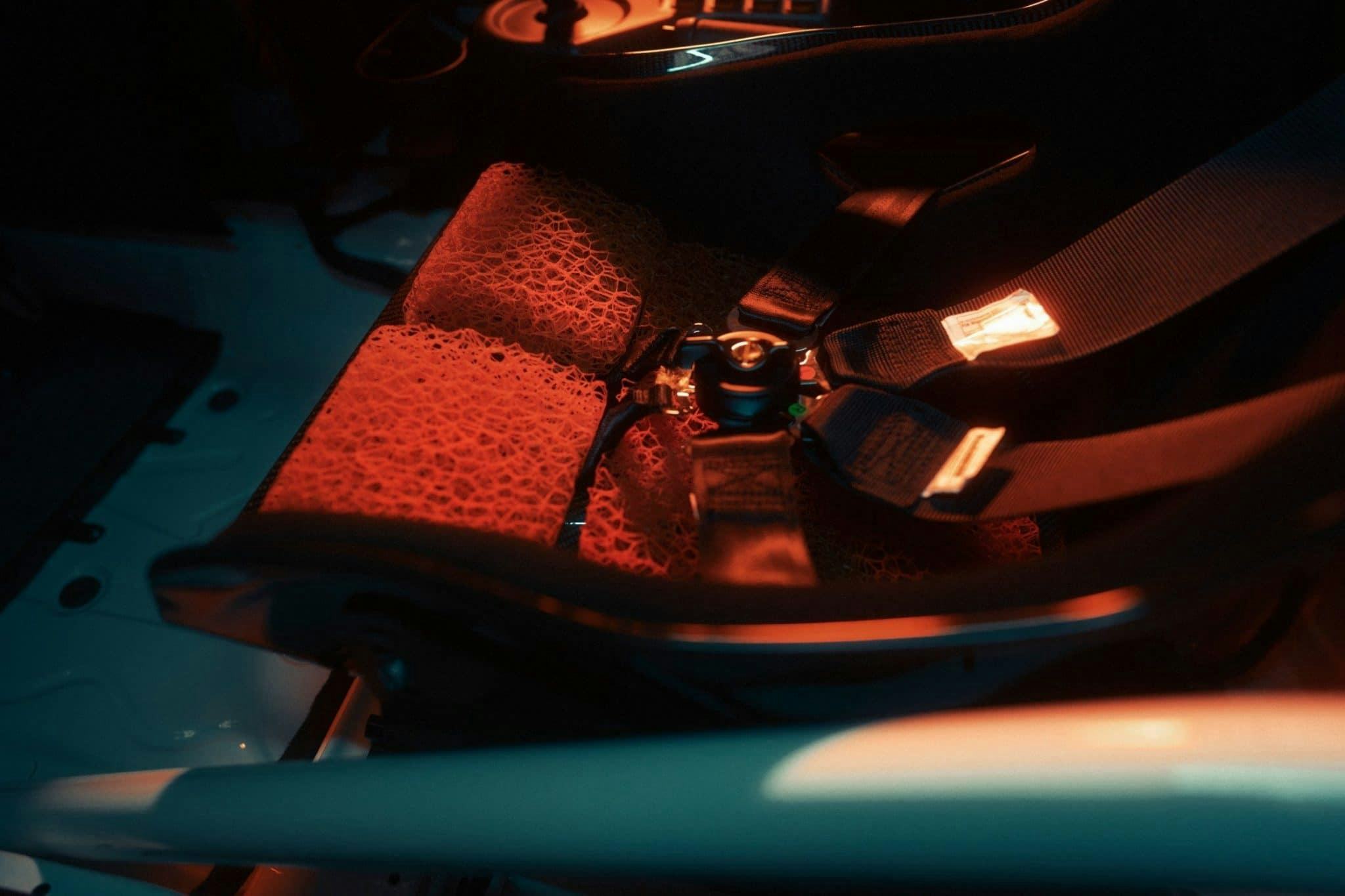
3D printed seats of the MINI Electric Pacesetter Formula E safety car, combining comfort with durability and modularity. Source.
Lightweighting applications in aerospace
Like automotive, the aerospace industry is subject to increasingly ambitious emissions targets and regulations. To meet these targets, aerospace engineers must commit to developing lighter, more environmentally-friendly aircraft.
Why is lightweighting important in aerospace?
The reasons lightweighting is vital in the aerospace industry are similar to those that apply to automotive. Engineers can achieve performance, emissions, and fuel economy gains by lightweighting airplanes, spacecrafts, helicopters, and drones. In commercial aviation and spacecraft design, lightweighting is of particular interest and importance.
Commercial aviation
Given that commercial air travel accounts for 3 to 4% of total U.S. greenhouse gas emissions, passengers are increasingly likely to opt for more environmentally-friendly airlines in their efforts to reduce their carbon footprint.
The public’s increasing interest in environmentally-friendly methods of travel makes lighter commercial airlines an attractive prospect. Because of this, weight reduction in commercial aircraft not only reaps performance, cost, and fuel efficiency rewards but is also likely to increase the airline’s popularity among fliers.
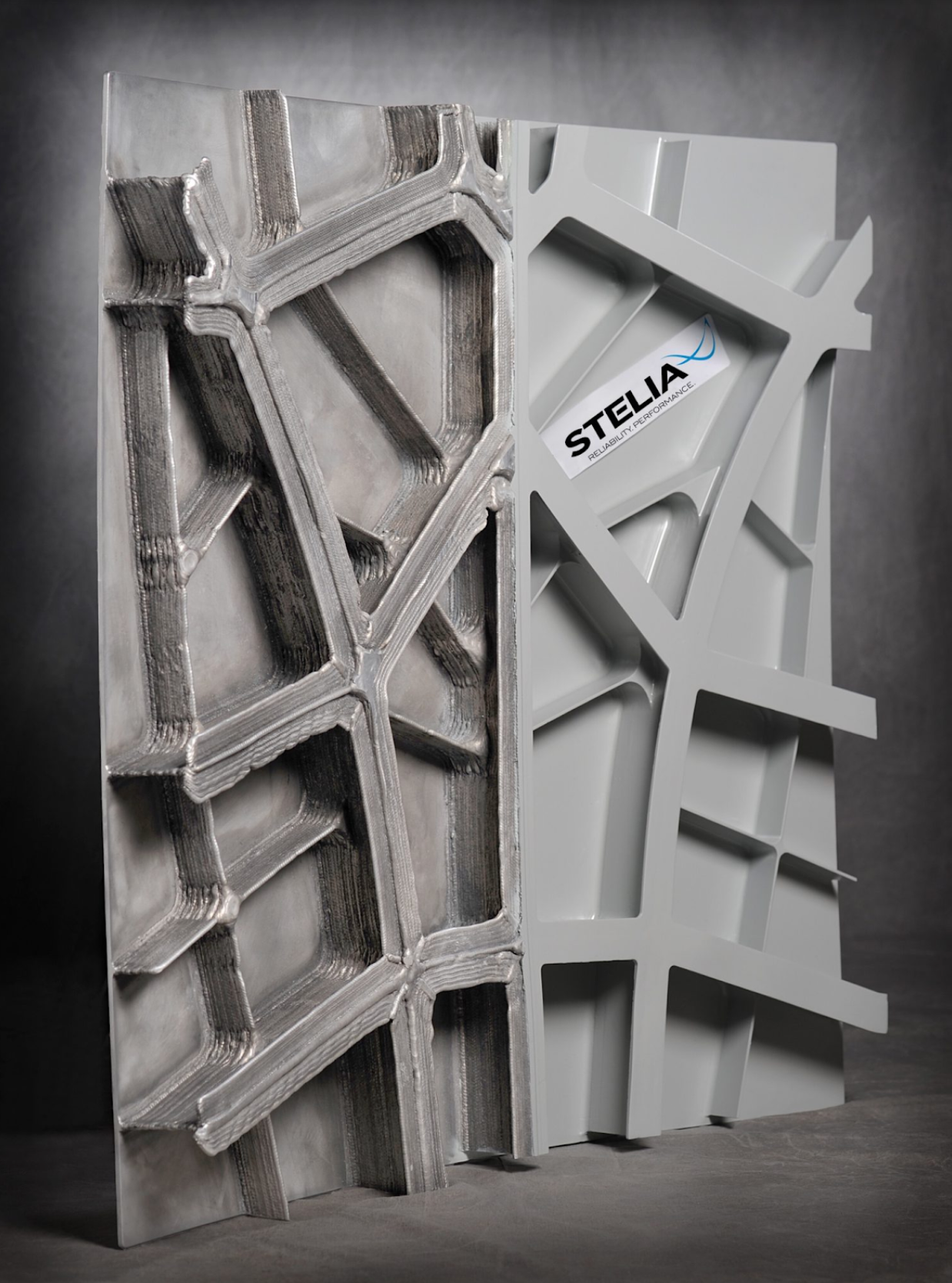
Aluminum panels of aircraft fuselage, manufactured with WAAM and with topology optimized ribs to strengthen the part. Source.
Spaceflight
Lightweighting has always been instrumental to aerospace and will continue to be as we endeavor to expand our spaceflight capabilities.
NASA is investing heavily in the development and manufacturing of ultra-lightweight architected materials in a bid to reduce the mass of spacecraft by 40% for deep-space exploration.
Steve Jurczyk, NASA’s Space Technology Mission Directorate in Washington, said the following: “Lightweight and multifunctional materials and structures are one of NASA’s top focus areas capable of having the greatest impact on future NASA missions in human and robotic exploration.”
Architected materials, like the sandwich-structure composites and multifunctional materials NASA employs, are often used in lightweighting applications to reduce weight while meeting other critical requirements — such as damage tolerance and achieving a specific stiffness.
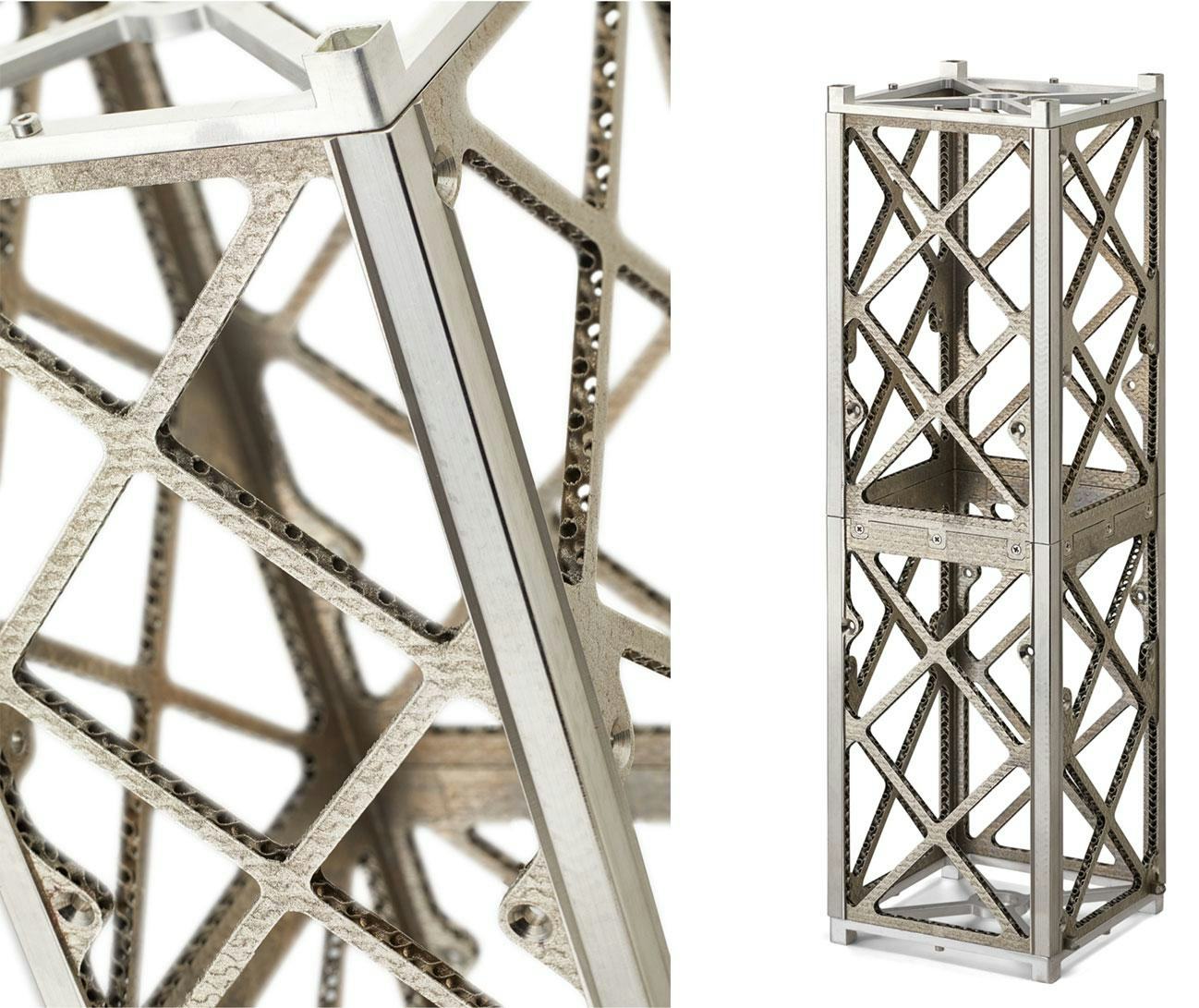
Additively manufactured CubeSat bus assembly from Inconel 718 instead of aluminum — 50% lighter and 20% stiffer than the original assembly. Source.
What's a good candidate for lightweighting?
In aerospace, almost all structural components can benefit from lightweighting. This includes the structural components of commercial aviation, defense, drones, satellites, rockets, and helicopters. Heat management systems, aircraft interiors, and other subsystems may also be lightweighted.
What’s the opportunity?
Many modern aircrafts rely on legacy designs and systems developed decades ago. There’s an opportunity for engineers to leverage lightweighting to rethink these legacy designs and lean on new manufacturing and design technologies to innovate aerospace products.
Example of aerospace lightweighting
For APUs on board an aircraft or drone, lightweighting is a number one priority — and every gram counts.KW Micro Power redesigned the housing of their aerospace-grade, high-power-density, compact turbogenerator for metal Additive Manufacturing. Using nTop, engineers applied lightweighting to reduce the part's weight by 44%.
The resulting design was a multifunctional, lightweight part with conformal channels that reduced the maximum operating temperature by 33%, improved the system’s efficiency, and significantly extended its machine life.
This example demonstrates that lightweighting doesn’t necessarily have to be complex. A simple, well-designed internal shell can significantly reduce the weight of a part — in this case, by a total of 4.5kg.
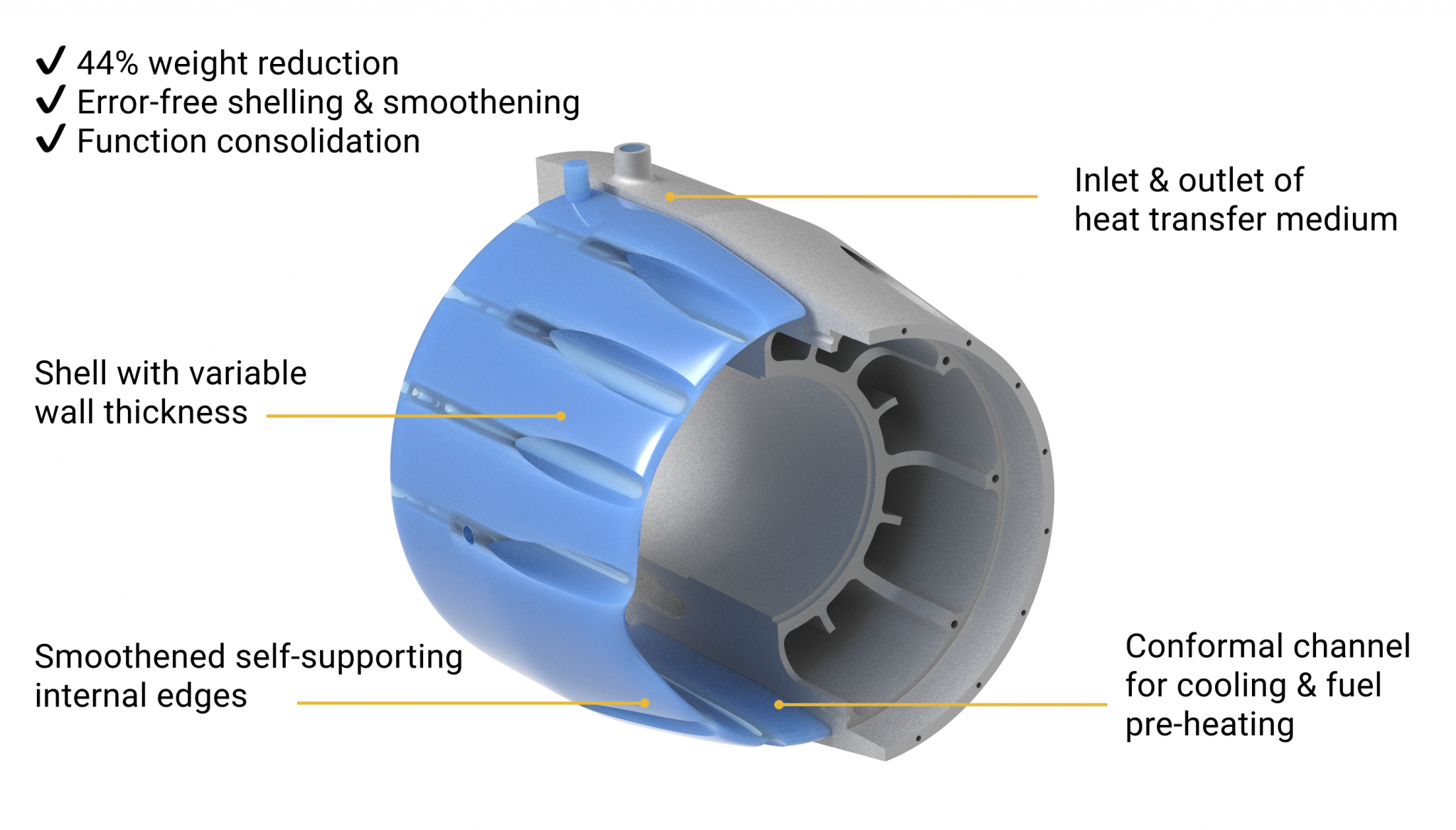
Lightweight multifunctional microturbine housing with embedded cooling channels, achieving 44% weight reduction and function consolidation. Source.
Lightweighting applications in heavy industrial equipment
The advantages of lightweighting in heavy industrial equipment are related to increased useful payload and range. Reduced mass also delivers improved efficiency and potentially significant manufacturing and operational cost savings.
Why is lightweighting important for industrial equipment?
In heavy equipment, contribute to an increase of useful payload and range. Simply put, for every hundred pounds of weight reduced, another hundred pounds can be pushed or pulled. This can amount to a considerable efficiency increase, faster work, and reduced operational costs.
According to a report released by IEA, the industrial sector accounts for more than 40% of the global electrical energy consumption. Lightweighting can help reduce the energy necessary for manufacturing, contributing to a greener manufacturing economy.
Lightweighting heavy industrial equipment can also improve worker safety during assembly because the resulting weight reduction makes handling more manageable and less likely to cause injury. Another key benefit is reduced transportation costs.
What’s a good candidate for lightweighting?
The benefits of lightweighting heavy industrial products can apply to an extensive range of equipment, including tractors, cranes, earth-moving equipment, heavy-duty trucks, trailers, and more. Lightweighting can be applied to all heavy metal cast components to reduce weight without compromising functionality.
What’s the opportunity?
Engineers have the opportunity to leverage topology optimization to reduce the weight of large cast parts. In doing so, they not only reduce the total weight of the machine but can potentially improve its performance, strength, and durability.
Example of lightweighting in heavy industry
3D printed sand casting molds and cores are changing how high-performance, large metal parts are manufactured today. Additive manufacturing enables modern foundries to produce complex metal parts in rapid lead times.
The image above shows a meter-long metal cast robot arm created by engineers using cutting-edge design techniques, like topology optimization, with advanced casting features that can only be manufactured additively (including the sprue, gates, and risers).
Using topology optimization, the team behind this design reduced the part’s weight by 40%, and directly 3D printed the entire sand mold.
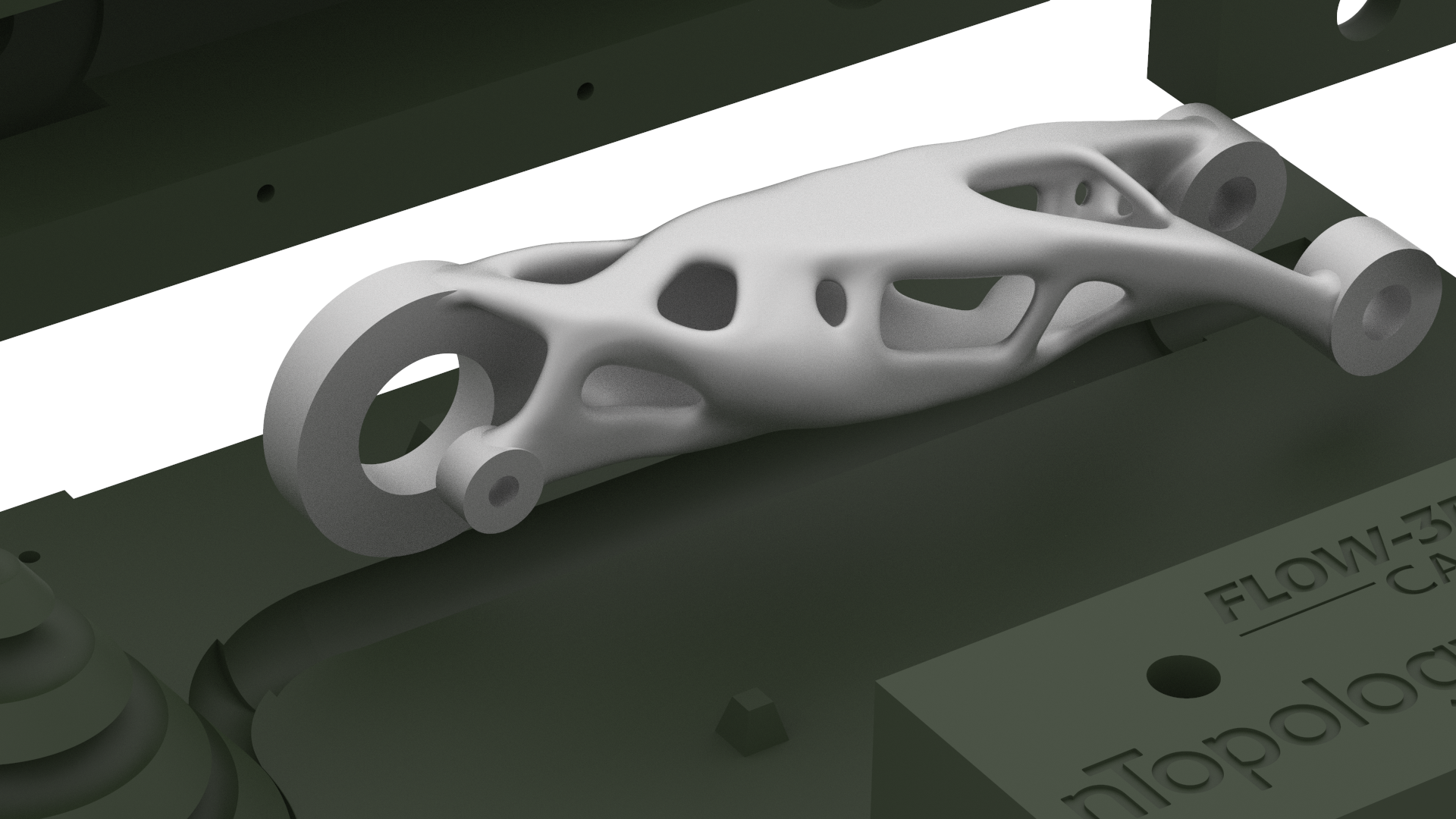
3D printed casting of a 3-foot long robot arm — topology optimization and advanced casting were leveraged to reduce weight by 40% and avoid common casting defects. Source.
Lightweighting applications in medical devices
The benefits of lightweighting in the medical devices industry are extensive. Lighter devices are typically more ergonomic, safer to use, and cheaper to manufacture. Lightweighting is also being leveraged in the medical industry to create patient-specific products, like custom prosthetics.
Why is lightweighting important in the medical industry?
A patient-specific device, also known as a patient-matched device, refers to medical devices designed and manufactured to align with the anatomical and physiological features of the individual patient. As patient-specific devices become more popular, lightweighting is playing an increasingly crucial role in the medical industry.
Patient-specific devices
In the US alone, 2 million people live with limb loss, but the price of prosthetics can total over $50,000 for a complex limb (like an arm or leg). Lightweighting allows custom prosthetic limbs and other prosthetics to be additively manufactured at a lower cost, making them more affordable to patients and healthcare providers.
Lightweighting offers similar benefits for other patient-specific medical devices, such as custom casts and orthopedic implants.
What’s a good candidate for lightweighting?
Lightweighting is relevant to the medical industry wherever a device, patient, or healthcare provider could benefit from a product being more ergonomic or user-friendly.
Lighter products are easier to use in the short term and offer significant benefits for patients and healthcare providers in the long term. The effect that reduced weight has on usability and ergonomics can directly impact patient outcomes and rehabilitation times.
What’s the opportunity?
The medical device industry faces an opportunity to combine lightweighting with biomimetic design to create structures inspired by nature. Biomimetics is an innovative design concept that involves adapting the designs and patterns we find in nature to solve complex human problems.
Industry experts anticipate that biomimetics will play an essential role in designing medical devices in the coming years. Lightweighting supports engineers in leveraging biomimetics while also preserving the strength of a part or device.
Example of lightweighting in medical eevices
A byproduct of lightweighting, in the form of perforations, is leveraged when designing 3D printed casts. The perforations in the cast offer increased breathability, which improves hygiene.
With lightweighting, these 3D printed casts can maintain their strength and durability but with significantly improved ergonomics and comfort for the patient.
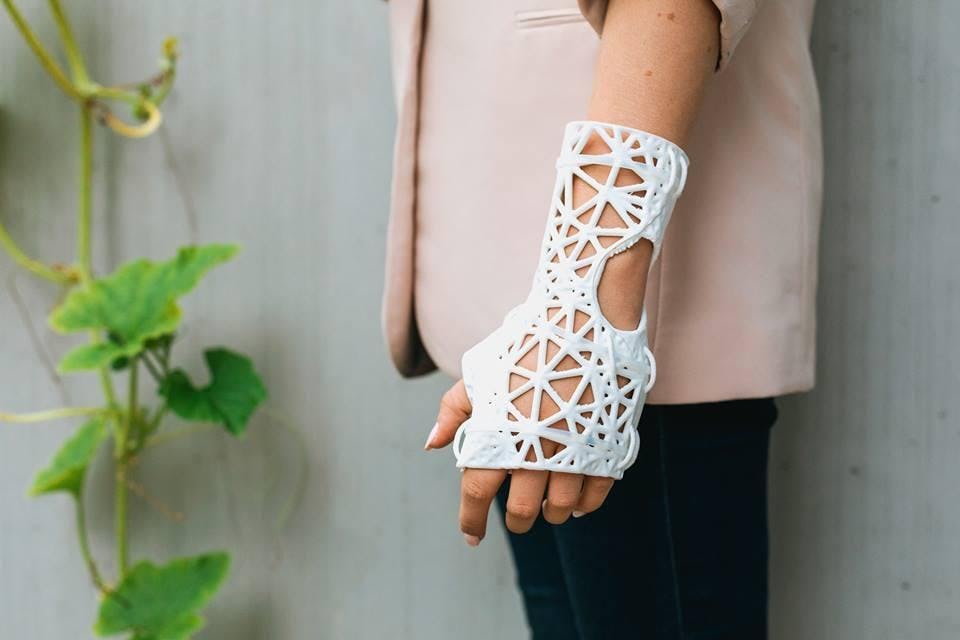
3D printed, lightweight custom casts offer improved breathability, comfort, and hygiene. Source.
Lightweighting applications in sports products
Lightweighting makes a considerable contribution to the quality of sports equipment. Each sports equipment product requires a unique combination of characteristics to provide optimum comfort, safety, and performance for the user.
Why is lightweighting important for sports products?
Given that the category of “sports products” is so broad, the importance of lightweighting varies according to sport and type of equipment.
Protective equipment
The primary purpose of protective equipment, such as knee and elbow guards, is to protect the user. Heavy protective equipment can decrease athlete performance, while lighter equipment may compromise how effectively the equipment provides protection.
Intelligent lightweighting enables engineers to design protective equipment that balances weight with performance, often improving athlete agility without negatively impacting agility and speed.
Sports equipment
When lightweighted, sports equipment — like golf clubs, rackets, and bats — can considerably improve the performance and comfort of an athlete. Lighter equipment is not only easier to handle but reduces athlete fatigue, enabling them to perform optimally for extended periods, and minimizes repetitive muscle strain that could lead to injury.
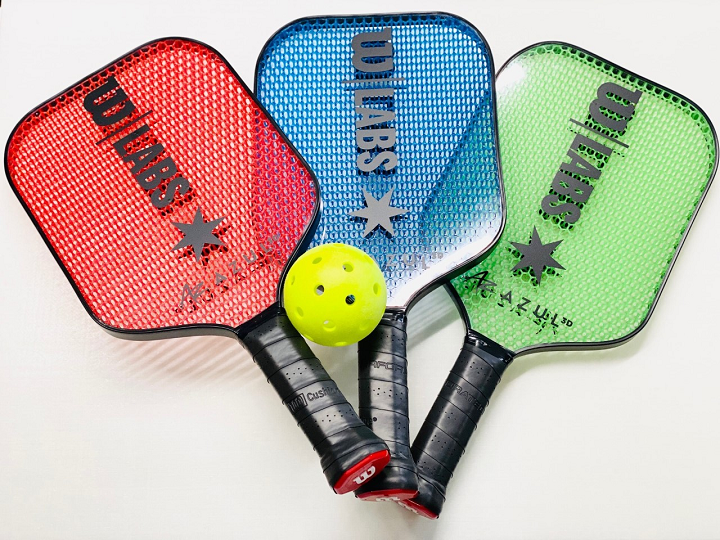
Wilson’s Quiet Paddle, features an internal lattice structure for weight reduction and sound absorption — the core can be also customized to a player’s needs. Source.
What’s a good candidate for lightweighting?
Provided that the purpose of a piece of sports equipment is not compromised by it being lighter, engineers can apply lightweighting to all sports equipment products. This includes but is not limited to tennis rackets, golf clubs, bicycle frames, bats, and gloves.
Lightweighting can improve user comfort, boost athlete performance by reducing weight, and afford athletes greater control by controlling the center of mass.
What’s the opportunity?
The primary opportunity for lightweighting sports equipment is to reduce weight without reducing functionality, which can create numerous performance benefits. Another opportunity is for engineers to use lightweighting to control a product’s center of mass, which allows for more precise handling. Lightweighting may also reduce manufacturing costs, increasing profit margins for sports equipment sellers.
Example of lightweighting in sports equipment
A helmet featuring the world’s first NHL-certified 3D printed hockey helmet liner is pictured below. This helmet liner, created by CCM Hockey in partnership with Carbon, is lightweight and conforms to the shape of the wearer. This is achieved by 3D scanning. The resulting design, which features a 3D printed lattice structure, offers improved impact absorption — increasing the wearer’s safety.
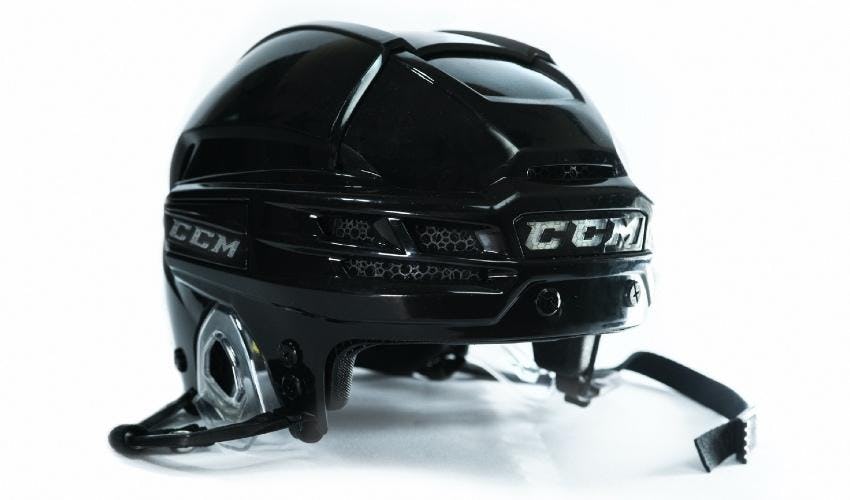
3D printed hockey helmet liners, featuring a 3D printed lattice structure that offers improved breathability, increased comfort, and significantly better protection than traditional foam inserts. Source.
Choosing the right tool for lightweighting
Maximizing the advantages of lightweighting across various applications and taking advantage of the opportunities available for each requires a specialized solution.
nTop is the only engineering design software that enables engineers to combine various lightweighting techniques — such as topology optimization, lattice structures, and conformal ribbing — in a streamlined, repeatable, and efficient way.
For lightweighting purposes, nTop is quite simply unmatched. Leading companies worldwide depend on it to develop revolutionary products in the medical, sports equipment, industrial equipment, aerospace, and automotive industries.

nTop
nTop (formerly nTopology) was founded in 2015 with the belief that engineers’ ability to innovate shouldn’t be limited by their design software. Built on proprietary technologies that upend the constraints of traditional CAD software while integrating seamlessly into existing processes, nTop allows designers in every industry to create complex geometries, optimize instantaneously, and automate workflows to develop breakthrough parts and systems in record time.




